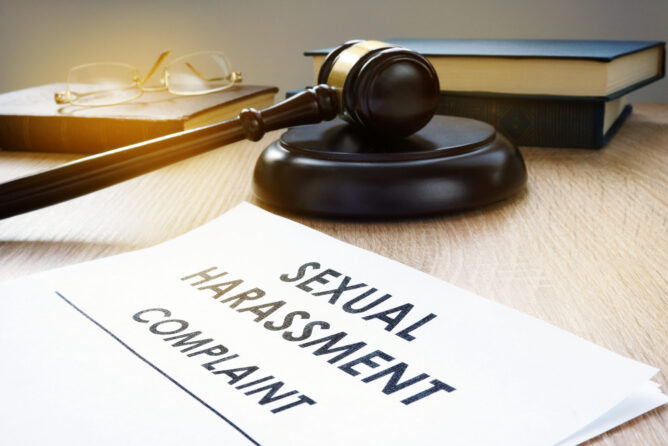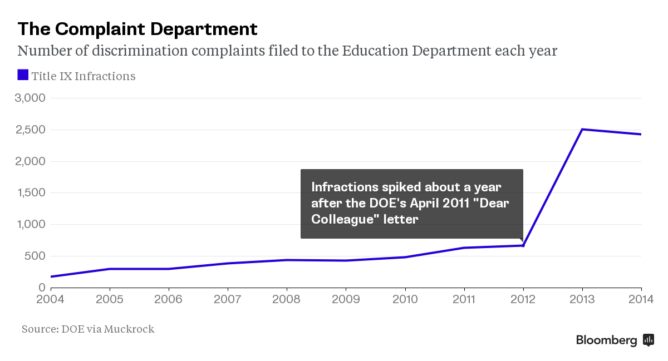Harvard. Catholic University. UCONN. UMASS. Boston College. Dartmouth College. Princeton University. College of William and Mary. What do these renowned and prestigious colleges and universities have in common? Title IX sexual harassment or assault lawsuits, some of which have resulted in multi-million-dollar settlements for victims, while others involved bigger class-action lawsuits.
Title IX history
Title IX, signed into law by President Nixon in 1972, declared that:
“No person in the United States shall, on the basis of sex, be excluded from participation in, be denied the benefits of, or be subjected to discrimination under any education program or activity receiving Federal financial assistance.”
First enacted to address discrimination in secondary and college-level sports, the law was designed to increase athletic opportunities and participation for woman at these levels, where male sports were dominant, which was seen as discriminatory.
were dominant, which was seen as discriminatory.
The law was expanded in the late 1970s to include sexual misconduct and to protect female students from sexual assault, rape and other violent sexual acts. Some individual states have added their own provisions, including the mandatory reporting of sexual misconduct.
But laws and policies are just concepts and pieces of paper if the environment on campuses that allows this type of sexual misconduct is permitted to continue. And many institutions are more concerned with protecting their reputations, their federal funding and their bottom lines than they are with seeking justice for the victims of sexual misconduct.
What a Title IX investigation process looks like
Title IX requires schools to handle reports of sexual harassment and assault properly, or risk losing federal funding. But the risk is greater than that – there is the risk of creating an unsafe campus, of losing valuable educators and staff and of damage to the school’s reputation, which could ultimately affect enrollment or disrupt a productive learning environment.
Schools are required to investigate any allegation of sexual harassment filed by a complainant in a formal complaint with the school’s Title IX Coordinator, starting with written notices of the allegations in the formal complaint sent to both the complainant and the accused. Students can also contact local law enforcement to open criminal proceedings.
An investigator is appointed to look into the claim, and this person is responsible for gathering evidence during the investigation process. After the investigation, a hearing is held to assess the evidence and the two parties are permitted to have legal representation who can cross-examine witnesses and the parties involved. A guilty determination is based on the “preponderance of evidence,” which requires convincing evidence, not a judgment that is based on “beyond a reasonable doubt.”
If the hearing goes against the accused, the punishment can include expulsion or suspension from campus for a certain timeframe in addition to fines and counseling.
Adding in the Final Rule
The initial Title IX regulation was viewed as heavily in favor of the accuser in sexual assault cases, without necessarily considering that the accused was innocent prior to the investigation, hearing and decision-making process. This caused many male students to cry “foul,” initiating civil lawsuits because they claimed their rights had been violated by unfair Title IX processes at the colleges and universities.
The Final Rule under Title IX, released in May 2020, declares that sexual harassment and sexual assault are unlawful sex discrimination, and it requires schools to respond equitably and promptly to sexual misconduct incidents.
The Final Rule addresses the requirements for schools responding to sexual harassment under Title IX “so that every complainant receives appropriate support, respondents are treated as responsible only after receiving due process and fundamental fairness, and school officials serve impartially without bias for or against any party.”
What colleges and universities can do to better protect students
Despite Title IX protections, many students are still afraid to come forward with reports of sexual abuse because they fear not being believed, they are unsure of the investigation and hearing process, or they fear retaliation.
Aside from having Title IX staff and procedures for reporting incidents of sexual harassment and assault on the college website, universities must do a better job of encouraging students to come forward. Nothing can be addressed if university officials don’t know what’s happening.
To protect accusers, universities must have:
- Multiple ways for them to come forward
- Mandatory reporting by faculty, staff, administrators to report wrongdoing when they see it or hear about it
- A well-staffed counseling center where students feel safe, knowing that their conversations are confidential, but where they can be encouraged to report sexual misconduct to the proper authorities
- Support for accusers once they come forward
Colleges and universities can create a culture where everyone feels safe – students, faculty and staff – through activities that raise awareness, reduce the risk of unwanted sexual encounters, properly respond to incidents of sexual violence and work to prevent sexual misconduct.
Awareness activities alert student to the prevalence of sexual violence and give students the resources and information they need should they find themselves victims. Reducing risk helps students and faculty to identify dangers and warning signs to decrease the number of incidents. If an assault occurs, response activities help survivors to deal with trauma.
Prevention brings campus communities together to root out the causes of sexual assault and address them. It’s about changing the culture so that an environment where sexual assault is seen as inevitable and unavoidable is no longer allowed to exist.
What colleges and universities can do to protect themselves
Colleges and universities need to be proactive in reducing the prevalence of campus sexual violence. Having policies and procedures in place to prevent, address and handle incidents of sexual violence is only a first step.
Having a proven system to properly investigate sexual misconduct includes having the right people, processes and technology in place to ensure that no stone is left unturned and that everyone involved – accuser, accused and witnesses receive fair and impartial interviews to get to the truth.
Without a fair, transparent and compliant system in place to gather and record information, colleges and universities and leaving themselves open to huge monetary settlements and a withdrawal of federal funding.
There’s just too much at stake not to get this right.




